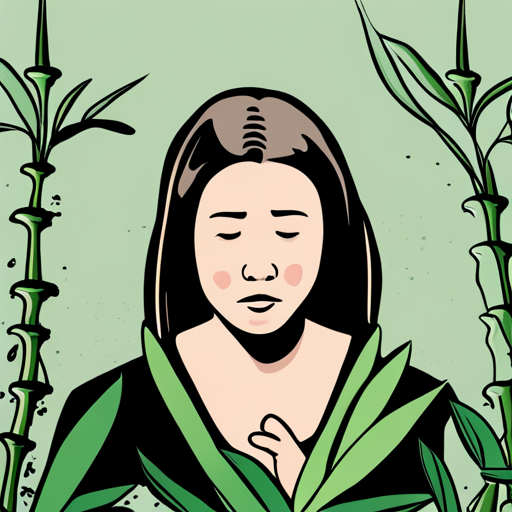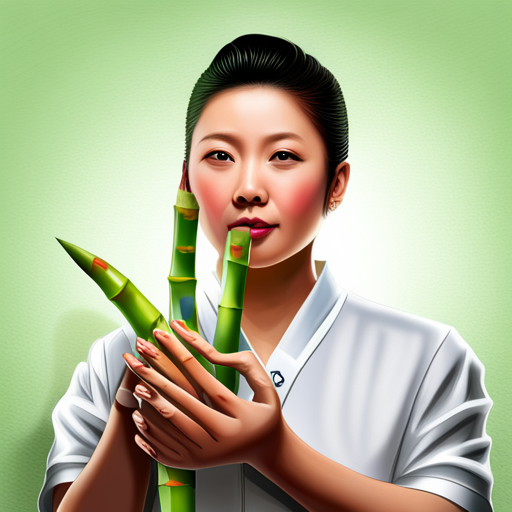Lucky bamboo, a popular houseplant, is often admired for its elegant appearance and believed to bring good fortune. However, it is important to be aware of its potential toxicity to humans.
Lucky bamboo contains a toxin called taxiphyllin, which can produce cyanide in the gut when consumed raw. Ingesting bamboo in its raw form can lead to various symptoms such as dilated pupils, abdominal pain, increased heart rate, and drooling. Therefore, caution should be exercised when handling or consuming lucky bamboo.
On the other hand, the tender young roots of lucky bamboo are edible for humans, as the toxin degenerates quickly when the shoots are boiled.
It is crucial to note that lucky bamboo is not a true bamboo plant but is related to the toxic Barberry plant.
Understanding the potential risks associated with lucky bamboo is important for ensuring the safety and well-being of individuals who come into contact with this plant.
Contents
- 1 Our Highlighted Points
- 2 Is it Toxic?
- 3 Symptoms and Effects
- 4 Edible Parts
- 5 Can Unhealthy Lucky Bamboo Plants Pose a Danger to Humans?
- 6 Frequently Asked Questions
- 6.1 How can I safely display lucky bamboo in my home without putting my pets at risk?
- 6.2 Are there any precautions I should take when handling lucky bamboo to avoid potential toxicity?
- 6.3 Can the toxins in lucky bamboo affect humans through skin contact or inhalation?
- 6.4 Are there any alternative plants that are similar to lucky bamboo but non-toxic to humans and pets?
- 6.5 Can lucky bamboo be safely used in aquariums without harming the fish or other aquatic animals?
Our Highlighted Points
- Lucky bamboo contains taxiphyllin, a toxin that can produce cyanide in the gut when consumed raw.
- Only the tender young roots of lucky bamboo are safe for consumption when cooked.
- Lucky bamboo poisoning should be treated promptly with medical attention, which may include induced vomiting and administration of activated charcoal.
– Consuming any part of lucky bamboo can be toxic to humans and animals.
Is it Toxic?

Lucky bamboo, including its tender young roots, contains a toxin that can produce cyanide in the gut when consumed by humans. This raises concerns about its potential health risks for individuals. Ingesting lucky bamboo can lead to symptoms such as dilated pupils, severe abdominal pain, increased heart rate, and drooling.
To ensure the safety of humans, it is important to take necessary precautions and safety measures when handling lucky bamboo. This includes keeping it out of reach of children and pets, as they are more susceptible to its toxic effects. Furthermore, individuals should avoid ingesting any part of the plant, except for the tender young roots that are deemed safe for consumption when cooked.
It is crucial to be aware of the toxic nature of lucky bamboo and take appropriate measures to prevent any potential health risks.
You may also like to know the benefits and dangers of bamboo murabba.
Symptoms and Effects

Symptoms and effects of ingesting lucky bamboo include dilated pupils, severe abdominal pain, increased heart rate, drooling, depression, loss of appetite, vomiting, weakness, incoordination, diarrhea, and dilated pupils. These symptoms can occur in both humans and animals.
Lucky bamboo toxicity can lead to serious health issues and should be treated promptly. If someone or a pet has ingested lucky bamboo, it is important to seek immediate medical attention. Treatment for lucky bamboo poisoning may include induced vomiting, administration of activated charcoal to absorb toxins, and supportive care to manage symptoms and prevent complications.
It is crucial to remember that consuming any part of lucky bamboo can be toxic to humans, and precautions should be taken to ensure the safety of both humans and animals.
Edible Parts

The tender young roots of this plant are the only parts that are considered edible for consumption. Lucky bamboo recipes usually involve cooking these roots to eliminate the toxin that produces cyanide in the gut when eaten raw.
It is important to note that only a small number of lucky bamboo species, around 110 out of over 1,000, have consumable shoots for humans. Despite its limited edibility, lucky bamboo does offer some potential health benefits. It is believed to have antioxidant properties and may help improve digestion and boost the immune system. However, more research is needed to fully understand the extent of these health benefits.
It is always recommended to consult with a healthcare professional before incorporating lucky bamboo into your diet.
You may also like to read whether bamboo is safe for pet rabbits or not.
Can Unhealthy Lucky Bamboo Plants Pose a Danger to Humans?
While lucky bamboo plant care is generally easy, neglect can cause the plant to become unhealthy. In some cases, unhealthy lucky bamboo plants can attract pests or develop mold, posing a potential danger to humans. Regular maintenance and proper care can help prevent these issues and keep your lucky bamboo plant healthy.
Frequently Asked Questions
How can I safely display lucky bamboo in my home without putting my pets at risk?
To safely display lucky bamboo in your home without putting pets at risk, ensure it is produced without chemical additives or dyes. Additionally, place it in an area inaccessible to pets and follow proper care guidelines to prevent ingestion. Having lucky bamboo in your home can bring fresh air and design elements.
Are there any precautions I should take when handling lucky bamboo to avoid potential toxicity?
Prevent lucky bamboo poisoning by handling it with caution. Symptoms of lucky bamboo toxicity include dilated pupils, severe abdominal pain, increased heart rate, drooling, depression, loss of appetite, vomiting, weakness, and incoordination.
Can the toxins in lucky bamboo affect humans through skin contact or inhalation?
There is no evidence to suggest that the toxins in lucky bamboo can affect humans through skin contact or inhalation. Proper care and maintenance of lucky bamboo, including avoiding ingestion, is crucial in minimizing toxicity risks. The effects of lucky bamboo toxins on indoor air quality are not discussed.
Are there any alternative plants that are similar to lucky bamboo but non-toxic to humans and pets?
Alternative plants, such as Dracaena sanderiana, Dracaena marginata, and Dracaena fragrans, can be used as lucky bamboo substitutes for home decor. These plants are non-toxic to humans and pets, making them a safe option for indoor decoration.
Can lucky bamboo be safely used in aquariums without harming the fish or other aquatic animals?
Lucky bamboo can be used as a natural filtration system in aquariums. It improves water quality by absorbing nitrates and other pollutants, aiding in oxygenation, and providing a habitat for beneficial bacteria. Compared to other plants, lucky bamboo is efficient in maintaining water quality.

